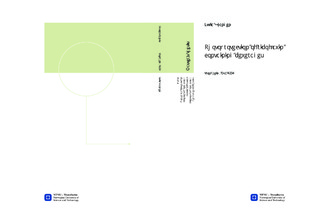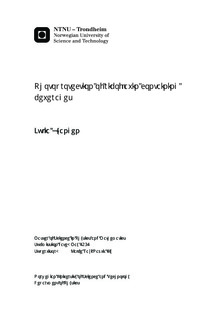| dc.description.abstract | Riboflavin, also known as vitamin B2 and one of the most easily absorbed nutrients,can be found in many different organisms. The most abundant source of riboflavin ismilk and dairy products; however it is also present in meat, fish and certain types ofvegetables and fruit. Riboflavin is an important part of a healthy diet in order to keep skin, eyes and nervous systems healthy. Some studies indicate that riboflavin plays an important role in cancer and cardiovascular diseases.As known, milk is extremely sensitive to light. Riboflavin is one of the factorsresponsible for the light-induced degradation of milk. In combination with light andoxygen riboflavin may act as a photosensitizer. When vitamin B2 absorbs blue-greenlight, an excited triplet state of riboflavin is generated through a process called intersystem crossing. Reactive oxygen species, such as singlet oxygen, is then formed by reaction of excited riboflavin triplet with dissolved oxygen present in milk. Light exposure of milk can lead to off-flavor and damage of vitamins by reaction of singlet oxygen with amino acids and lipids in milk. Unfortunately, most of the packaging materials today do not protect milk from light completely. The formation of singlet oxygen can also be prevented by adding quenchers that are able to deactivate riboflavin triplets.Certain amino acids and carotenoids are well known flavin quenchers.The purpose of this study was to investigate how well riboflavin triplets can bequenched by amino acids cysteine, histidine, methionine, tyrosine and tryptophan. Thequenching properties of hydrophilic carotenoid crocin were studied as well. Crocinhas been under investigation of researches at the Departement of Physics at NTNU.Lumiflavin, which is one of the riboflavin s photodegradation products, was used instead of riboflavin. The former is more stable and has similar photochemical characteristics as the latter.The quenching of lumiflavin triplets was studied by using laser flash photolysis. Itconsists of irradiating the sample under investigation with a short-lived laser flash. The method was used to measure the kinetic decay rate of lumiflavin in aqueous buffer with and without different concentrations of a quencher. The data were fitted to two different decay models. From pseudo-first-order rate constants the quenching rate constants were determined for each amino acid and crocin. All amino acids and crocin used in this study showed a quenching effect on the lumiflavin triplets. Further, it was determined whether the fitting models are suitable for these kind of measurements by simulating the decay of lumiflavin with and without any quencher. More studies on the fitting models have to be done to be able to get reliable results. | nb_NO |

